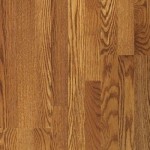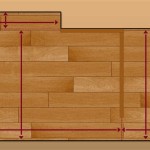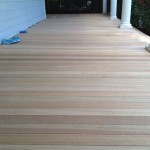Installing Lifeproof Vinyl Flooring Over Concrete
Lifeproof vinyl flooring offers a durable and stylish solution for homeowners seeking a low-maintenance floor covering. Its water-resistant properties, scratch resistance, and realistic wood or tile aesthetics make it an excellent choice for various rooms, including kitchens, bathrooms, and basements. Installing Lifeproof vinyl flooring over concrete requires careful preparation and adherence to proper installation techniques to ensure a seamless and long-lasting result. This article provides a comprehensive guide to installing Lifeproof vinyl flooring over concrete, outlining essential steps and considerations.
Preparing the Concrete Subfloor
A smooth and even concrete subfloor is crucial for a successful Lifeproof vinyl flooring installation. Begin by thoroughly cleaning the concrete surface to remove any dirt, debris, dust, or loose particles. Use a stiff-bristled broom, vacuum cleaner, or a damp mop to achieve a completely clean surface. Next, inspect the concrete for cracks, holes, or uneven areas. Any significant cracks or holes need to be repaired using patching compound or epoxy. Once the repairs are complete, allow them to fully cure according to the manufacturer's instructions.
If the concrete subfloor is uneven, consider using a self-leveling compound to achieve a smooth surface. Self-leveling compound quickly fills in low spots and creates a consistent level for your vinyl flooring. Apply the compound according to the manufacturer's instructions, ensuring it spreads evenly across the entire surface. Allow the self-leveling compound to dry completely before proceeding with the next step.
Moisture Barrier and Underlayment
Installing a moisture barrier is essential when installing Lifeproof vinyl flooring over concrete. Concrete can naturally release moisture, potentially damaging the vinyl flooring. A moisture barrier acts as a protective layer to prevent moisture from reaching the floor covering. Various moisture barrier options are available, including 6-mil polyethylene sheeting or a self-adhesive membrane. Ensure the moisture barrier overlaps at least six inches at the seams and extends up the walls approximately 4 inches.
After installing the moisture barrier, it is recommended to use an underlayment for added protection and comfort. Underlayment acts as a cushioning layer beneath the vinyl flooring, reducing noise and providing extra insulation. Select an underlayment specifically designed for vinyl flooring, ensuring it is compatible with your chosen flooring. Underlayment typically comes in rolls and is installed by rolling it out over the moisture barrier, ensuring the seams overlap and are taped together.
Installing Lifeproof Vinyl Flooring
Lifeproof vinyl flooring comes in various installation methods, including loose lay, click-lock, and glue-down. The chosen method will depend on the specific type of Lifeproof vinyl flooring and personal preference.
For loose lay installations, carefully measure and cut the planks or tiles to fit the room dimensions. Begin laying the flooring panels from the center of the room, working outwards towards the walls. Ensure the seams align perfectly, maintain a consistent gap between the panels and the walls, and use spacers to achieve even spacing.
Click-lock installation involves interlocking the panels together using a tongue-and-grove system. Start from one corner of the room and slowly work your way towards the opposite side. Carefully align the panels and gently press them together to create a secure connection.
Glue-down installations require applying adhesive to the concrete subfloor before laying the vinyl flooring. Spread the adhesive evenly across the subfloor using a notched trowel, following the manufacturer's instructions. Carefully position the vinyl panels on the adhesive and apply firm pressure to ensure a secure bond.
Regardless of the installation method, ensure that the vinyl flooring is properly installed in accordance with the manufacturer's instructions. Follow the recommended guidelines for seam alignment, panel spacing, and transition strips to create a seamless and aesthetically pleasing floor covering.

Tips For Installing Vinyl Plank Over Concrete Floors Lemon Thistle

Why We Chose Lifeproof Vinyl Flooring And How To Install It

How To Install Lifeproof Flooring The Home Depot

How To Install Vinyl Or Laminate Floors In A Basement Over Concrete Slab

How To Prepare A Concrete Floor For Vinyl Flooring Parrys

Why We Chose Lifeproof Vinyl Flooring And How To Install It

Lifeproof Luxury Vinyl Plank Flooring Installation And Subfloor Preparation Tips

Installing Vinyl Plank Flooring How To Fixthisbuildthat

Why We Chose Lifeproof Vinyl Flooring And How To Install It

Lifeproof Vinyl Flooring Installation How To Install Luxury Plank
Related Posts








